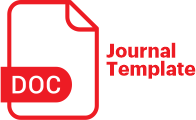Implementasi Transformasi Fourier pada Profilometer Optik Tiga-Dimensi (3-D) dengan Menggunakan Teknik Proyeksi Pola-pola Garis
DOI:
https://doi.org/10.26555/jim.v12i1.30992Keywords:
Transformasi Fourier Algoritma FFT, Profilometer Optik, Tiga Dimensi (3-D), Proyeksi Pola-pola garisAbstract
Pencitraan optik secara non-kontak untuk pengukuran dan pengetahuan profil permukaan obyek riil 3-D sangat penting dalam bidang industri dan medis. Di antara beberapa teknik pencitraan optik, profilometer optik dengan teknik proyeksi pola-pola garis periodik menjanjikan untuk dikembangkan lebih lanjut. Pola-pola ini mirip dengan sinyal, sehingga teknik yang biasa digunakan dalam pengolahan sinyal digital seperti transformasi Fourier atau algoritma Fast Fourier Transform (FFT) dapat diterapkan untuk mengolah pola-pola garis ini. Makalah ini membahas dan mendemonstrasikan implementasi algoritma FFT untuk profilometer optik, baik dengan simulasi komputer maupun eksperimen di laboratorium. Hasil simulasi dan eksperimen menunjukkan bahwa algoritma FFT sangat layak dan handal dalam merekonstruksi citra 3-D dari suatu bentuk permukaan obyek riil yang sedang diuji. Ke depan profilometer optik dengan proyeksi pola-pola garis periodik dan algoritma FFT dapat dikembangkan menjadi sebuah perangkat pencitraan optik yang baru untuk misalnya membuat dokumen digital citra 3-D dari seni topeng atau relief suatu candi.
References
M. N. Alkhatib, Y. D. Shmelev, O. A. Tyshova, I. V. Sinilshchikov, and A. V. Bobkov, “3D measurement using fringe projection profilometry,” Comput. Opt., vol. 47, no. 6, pp. 913–919, 2023, doi: 10.18287/2412-6179-CO-1297.
S. Lv, D. Tang, X. Zhang, D. Yang, W. Deng, and Q. Kemao, “Fringe projection profilometry method with high efficiency, precision, and convenience: theoretical analysis and development,” Opt. Express, vol. 30, no. 19, p. 33515, 2022, doi: 10.1364/oe.467502.
D. K. Lee and B. Y. Park, “A case study for 3D scanning-based quantitative quality control during key stages of composite small craft production,” Int. J. Nav. Archit. Ocean Eng., vol. 15, p. 100534, 2023, doi: 10.1016/j.ijnaoe.2023.100534.
K. Higuchi et al., “Three-dimensional visualization improves the endoscopic diagnosis of superficial gastric neoplasia,” BMC Gastroenterol., vol. 21, no. 1, pp. 1–9, 2021, doi: 10.1186/s12876-021-01829-y.
Z. Wang, R. Yi, X. Wen, C. Zhu, and K. Xu, “Cardiovascular medical image and analysis based on 3D vision: A comprehensive survey,” Meta-Radiology, vol. 2, no. 4, p. 100102, 2024, doi: 10.1016/j.metrad.2024.100102.
L. Wang et al., “Computer-generated moiré profilometry based on flat image demodulation,” Opt. Rev., vol. 28, no. 5, pp. 546–556, 2021, doi: 10.1007/s10043-021-00686-0.
X. Meng, F. Wang, J. Liu, M. Chen, and Y. Wang, “Phase shifting profilometry based on Hilbert transform: An efficient phase unwrapping algorithm,” J. Appl. Phys., vol. 131, no. 19, 2022, doi: 10.1063/5.0084695.
S. Wildeman, “Real-time quantitative Schlieren imaging by fast Fourier demodulation of a checkered backdrop,” Exp. Fluids, vol. 59, no. 6, p. 0, 2018, doi: 10.1007/s00348-018-2553-9.
B. Li, Y. An, and S. Zhang, “Single-shot absolute 3D shape measurement with Fourier transform profilometry,” Appl. Opt., vol. 55, no. 19, p. 5219, 2016, doi: 10.1364/ao.55.005219.
W. van Drongelen, LTI Systems. 2018.
D. Mahmoud, A. Khalil, and M. Younes, “A single scan longitudinal calibration technique for fringe projection profilometry,” Optik (Stuttg)., vol. 166, pp. 270–277, 2018, doi: 10.1016/j.ijleo.2018.04.038.
C. M. Melgoza et al., “Wavelet Analysis Using Hilbert Transform and Matching Algorithm for Radar Receiver System,” 2021 IEEE 11th Annu. Comput. Commun. Work. Conf. CCWC 2021, pp. 233–237, 2021, doi: 10.1109/CCWC51732.2021.9375953.
M. A. Gdeisat, D. R. Burton, F. Lilley, M. Arevalillo-Herráez, A. Abushakra, and M. Qaddoura, “Shifting of wrapped phase maps in the frequency domain using a rational number,” Meas. Sci. Technol., vol. 27, no. 10, 2016, doi: 10.1088/0957-0233/27/10/105003.
G. S. Spagnolo, L. Cozzella, and F. Leccese, “Projected fringes profilometry for cultural heritage studies,” 2019 IMEKO TC4 Int. Conf. Metrol. Archaeol. Cult. Heritage, MetroArchaeo 2019, pp. 435–438, 2019.
B. Satria and A. Franz, “Membangun Aplikasi Pengenalan Topeng Hudoq Berbasis Augmented Reality Dengan Metode Marker Based Tracking,” J. Ilmu Komput. dan Sist. Inf., vol. 6, no. September, pp. 103–110, 2023, [Online]. Available: http://ejournal.sisfokomtek.org/index.php/jikom/article/view/1703%0Ahttp://ejournal.sisfokomtek.org/index.php/jikom/article/download/1703/1133.
F. Gascon and F. Salazar, “Simulation of Rough Surfaces and Analysis of Roughness by MATLAB,” MATLAB - A Ubiquitous Tool Pract. Eng., no. February, 2011, doi: 10.5772/22534.
S. Ortiz, M. A. Mallaiyan Sathiaseelan, and A. Cha, “Time-of-flight camera characterization with functional modeling for synthetic scene generation,” Opt. Express, vol. 29, no. 23, p. 37661, 2021, doi: 10.1364/oe.438523.
Downloads
Published
Issue
Section
License
Copyright (c) 2025 Margi Sasono, M Kalim, Dhea Aura Nabitha

This work is licensed under a Creative Commons Attribution-NonCommercial-ShareAlike 4.0 International License.
Authors who publish with this journal agree to the following terms:
1. Authors retain copyright and grant the journal right of first publication with the work simultaneously licensed under a Creative Commons Attribution License that allows others to share the work with an acknowledgment of the work's authorship and initial publication in this journal.
2. Authors are able to enter into separate, additional contractual arrangements for the non-exclusive distribution of the journal's published version of the work (e.g., post it to an institutional repository or publish it in a book), with an acknowledgment of its initial publication in this journal.
3. Authors are permitted and encouraged to post their work online (e.g., in institutional repositories or on their website) prior to and during the submission process, as it can lead to productive exchanges, as well as earlier and greater citation of published work.

This work is licensed under a Creative Commons Attribution-ShareAlike 2.0 Generic License.









